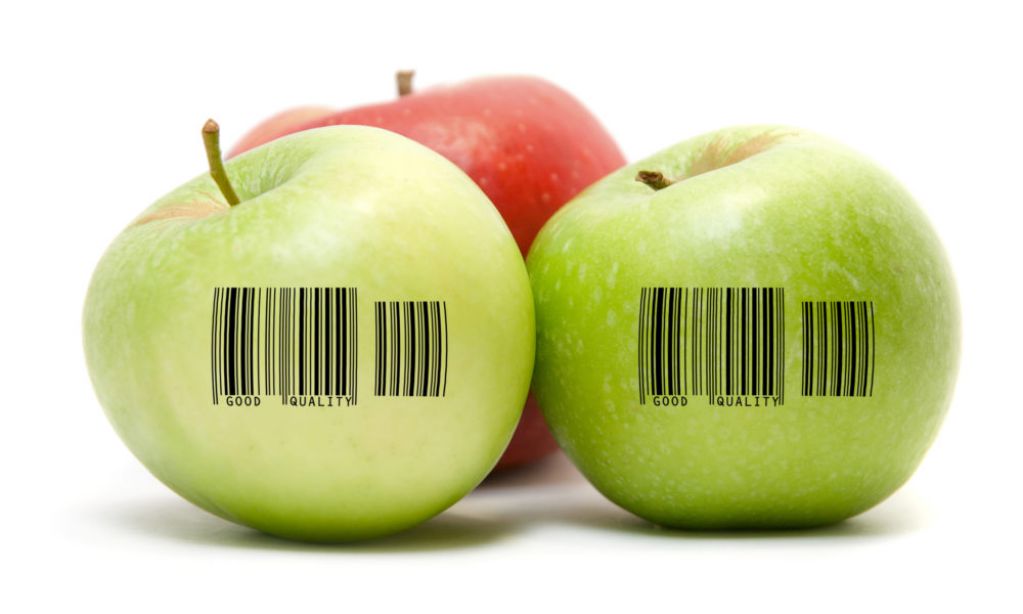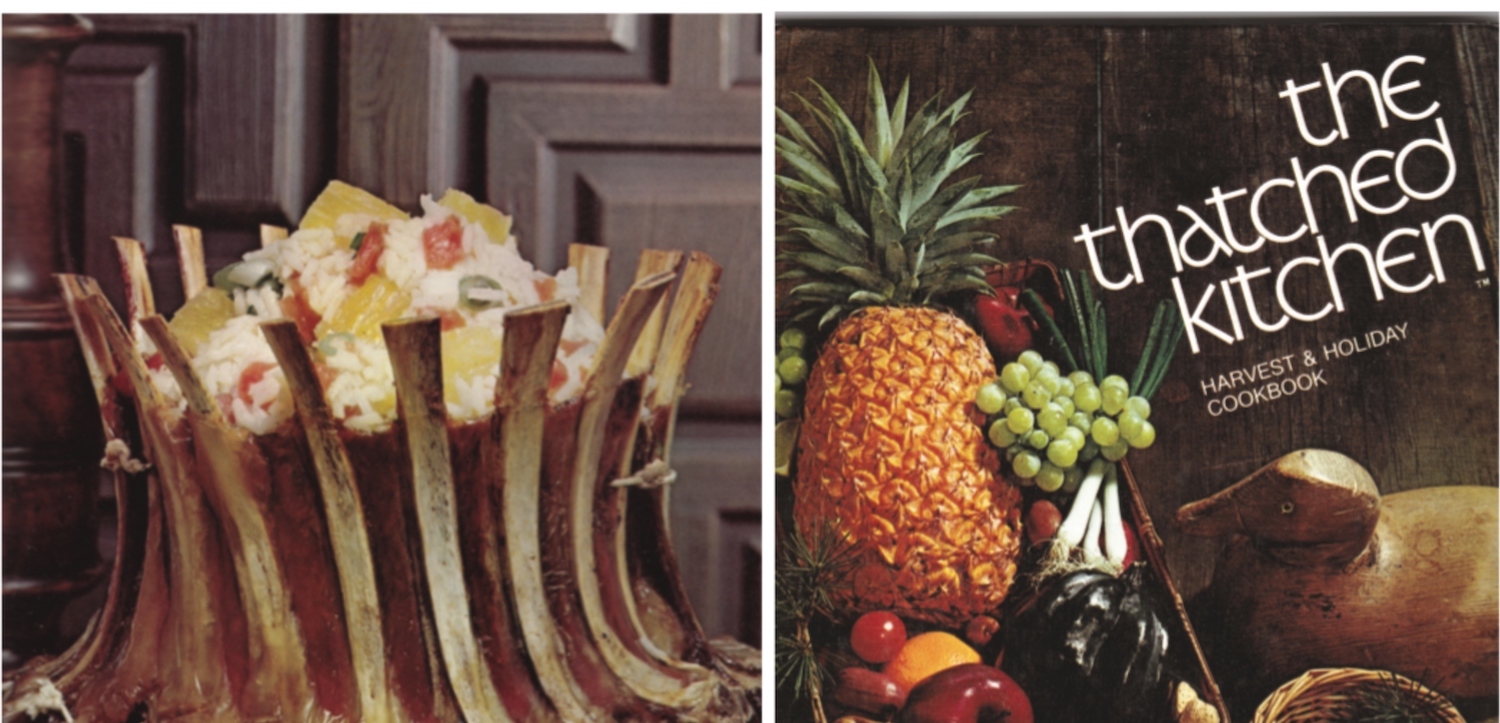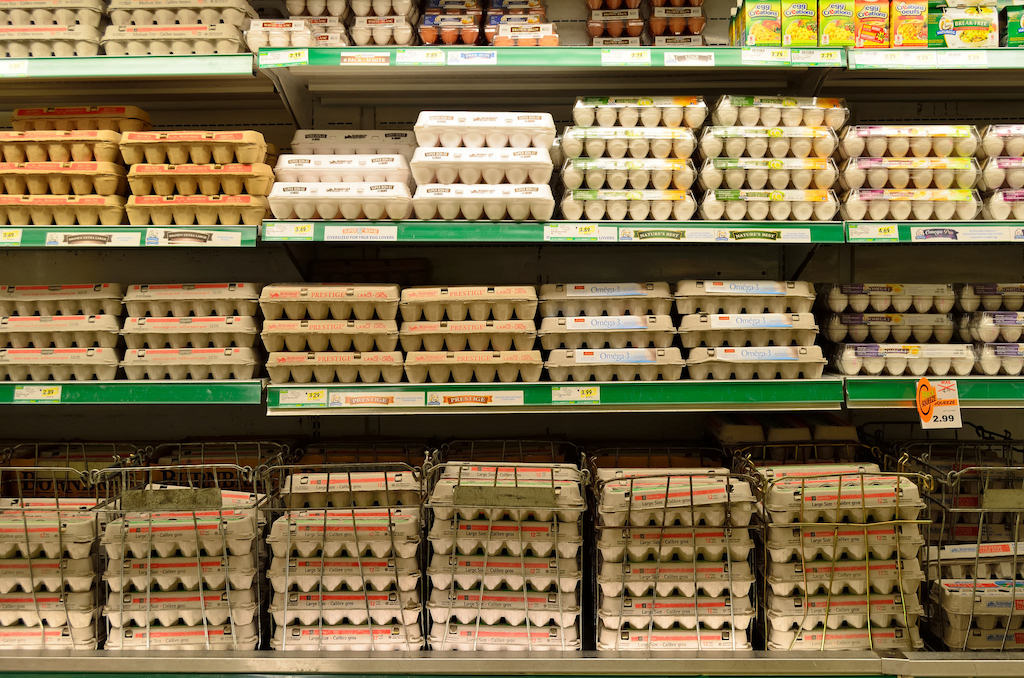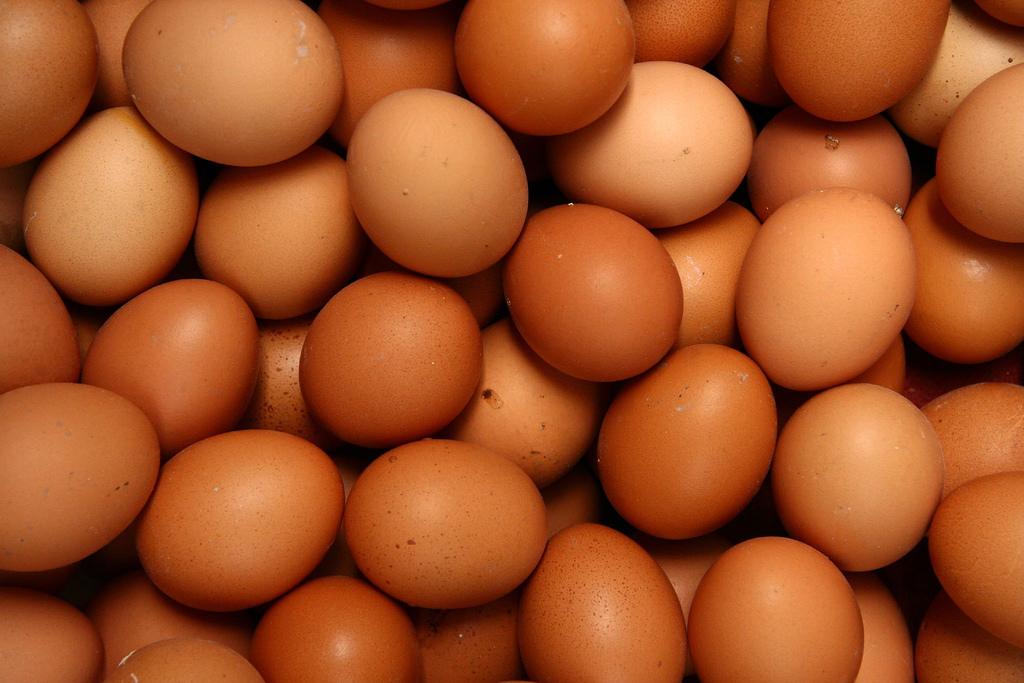
It was the shocker of the summer: Good Eggs, a power player in the food delivery space, with $52.5 million in funding from high-powered investors and operations in four cities, was taking a big step backward. They shut down facilities in Brooklyn, New Orleans, and Los Angeles, and trimmed staff at the San Francisco headquarters. Meanwhile, the farmers who supplied Good Eggs’ locally-sourced food were left scrambling, many with just a day or two of notice that their products were no longer needed.
In a blog post titled “Good Eggs 2.0—A plan for our future,” CEO Rob Spiro posted an explanation of sorts. “The single biggest mistake we made,” he wrote, “was growing too quickly, to multiple cities, before fully figuring out the challenges of building an entirely new food supply chain.”
But Spiro didn’t provide specifics about what those challenges were. As the press tried to make sense of the announcement, “too quickly” and problems of “scalability” became the conventional wisdom . Writing in Food + Tech Connect, Danielle Gould said:
Sure, as a two-sided marketplace, you have to make sure you’ve built a service both producers and consumers want to use. But in some cases these are just vanity metrics. You also have to ensure that your model is fundamentally scalable, that you have the right team in place to scale it and, most importantly, that you’ve figured out how to make the economics work as you scale.
In fact, as Spiro explained in a series of interviews with New Food Economy, Good Eggs’ problems went much deeper. Scale was only one component of a larger, more fundamental identity crisis. As Spiro tells the story, Good Eggs came to realize that it had misunderstood its core customers and what they wanted, and that the supply chain the company had built and was trying to expand wasn’t actually right for the market. Major changes were needed, including important additions to Good Eggs’ highly regarded IT platform. In retrospect, Good Eggs’ surprise pull-back looks less like an effort to slow down and more like a relaunch and repositioning.
Meanwhile, food delivery isn’t standing still—as heavyweights like Amazon and Google continue to redefine convenience, innovative new players keep entering the space. The latest contender? Mark Bittman, the high-profile writer, cookbook author and former New York Times columnist has just announced that he’s thrown his lot in with another food delivery startup, this one coming from a vegan perspective: the Purple Carrot.
Can Good Eggs scale the new model? Will it be able to rebuild damaged relationships with suppliers? And will the changes be enough to win the company a spot in what may be good food’s most hotly contested specialty—home delivery? Here’s how things look to Spiro today.
From locavores to home cooks: the changing Good Eggs customer
Good Eggs’ founders thought their original pitch—local food, delivered—would bring shoppers to the site in droves. Most people, they felt, would choose regionally-sourced groceries over conventional ones—if only local food wasn’t so inconvenient. By offering home delivery, they hoped to win over all the people who ever quit a CSA or skipped the farmers’ market for the grocery store. If these would-be locavores could order local food to their doorstep with a single mouse click, the thinking went, why would they ever go back to Stop & Shop?
So Good Eggs spent its first few years building a local food distribution system of unprecedented speed and complexity. Compare Farmigo, a well-funded competitor: the company offers only pickup locations, and orders close three or four days in advance. Good Eggs’ original platform—farm to doorstep in 48 hours or less—still remains unparalleled in the world of local food delivery.
But as the company tried to attract more customers, it found even this proposition wasn’t good enough. Their customers did want local food—but not enough to face even the modest hassle of ordering food online (and waiting two days for it). “A mistake we made is thinking that the mission is what the customers wanted,” Spiro says. “It works to a certain extent. But we found there’s a much broader group of consumers who care about local food systems—just as a secondary concern.”
He’s talking about home cooks.
“The people who really love to cook became our weekly shoppers,” Spiro explains. Yes, local is a plus for them; Spiro says it “supports their values.” But it’s not primarily what drives them to the site. What really gets them? The ultra-freshness. The flavors they can’t find in the grocery store. The heirloom varieties. The killer ingredient that becomes a conversation piece.
Who says late-year produce is drab?! We’ve got the good stuff—plus a week’s worth of equally bright seasonal recipes—with the link in our profile. #goodeggseats A photo posted by Good Eggs (@goodeggs) on
“They’re the ones who really understand why it’s better than the industrial alternative you get at the supermarket,” Spiro says. But they’re not local devotees as much as experience cooks who want premium-quality, ultra-fresh ingredients. And they want them quickly.
“People who love to cook are frequently thinking about food and what to cook tomorrow for dinner,” Spiro says. And the forty-eight-hour delivery window is too slow to attract them.
This is partly consumer preference, but also has to do with the fact that in the home cook arena, Good Eggs is up against a different set of competitors: Amazon Fresh offers morning delivery for orders placed by 10 PM the previous day; Fresh Direct offers delivery the next day on orders placed by 3 PM; Google is piloting same-day food delivery in San Francisco. And that’s not even counting grocery stores. The urban centers which are the optimal market for Good Eggs are rich with grocery options that are well-stocked, open late, and don’t require customers to wait at home for a truck to come.
“We’ve found that the bar for convenience in the world of home delivery is extremely high,” Spiro says. “In U.S. urban areas, there’s same-day, few-hour delivery of everything—that’s the new norm for convenience.”
So Good Eggs had no choice—it had to get on board. Today a Good Eggs customer in San Francisco can place an order by 10 PM and can receive it before noon, on par with Amazon Fresh and faster than Fresh Direct.
All the company had to change was … really, almost everything.
From Good Eggs 1.0 to the “Hybrid Model”
It’s not that hard to do next-day delivery if you’re Amazon Fresh. You have a giant warehouse. When the orders come in, you already have the inventory in stock. You file the order and deliver the goods as quickly as you can.
But Good Eggs has always taken a different approach. It had tiny warehouses, rarely held more food than could be delivered within 48 hours, and walked away most nights with the shelves and coolers empty.
“We’re able to significantly reduce the footprint that a typical grocer needs,” Julian Nachtigal, Good Eggs’ San Francisco Foodshed lead, told me in a November 2013 interview. “With an on-demand inventory model, you don’t need 100,000 square feet because of how fast things are moving in and out. That contributes to the freshness, and since we save by not storing inventory, the producer gets more of a cut.”
“Just-in-time” fulfillment is common in manufacturing, but Good Eggs was the first to bring it to the retail sale of locally sourced perishable goods. In the end, though, that model didn’t quite make sense.
“The original model was simple and—we thought—elegant,” Spiro says. “But then, as we started to serve more people’s real grocery needs, as well as up the level of convenience, we realized there were actually some products that we wanted to hold on to, because they were more shelf stable and it didn’t make sense for the farmer or producer to be bringing them to us every day. Why not have the eggs and milk delivered to us twice a week, and we hold on to them? It’s been better for the food producer, better for us, and better for the customer.”
So Good Eggs started to switch to what Spiro calls a hybrid inventory model, which he says is “very different from the grocery store, but also different from our original premise.” The company started to take on significant inventory, while produce and other highly-perishable items still cycled in and out quickly. (This was one reason why, in December 2014, Brooklyn Good Eggs left its 10,000-square-foot facility in the Pfizer Building — home to many local small batch producers — for a 20,000-square-foot facility on the border of Williamsburg and Bushwick. To an outside observer, it seemed the company was preparing to double its volume. In reality it was preparing to keep more stock on hand.)
The combination of next-day delivery and no-inventory, just-in-time ordering for perishables greatly reduced the amount of lead time Good Eggs could give its suppliers. Under the new system, farmers could get orders at 10 PM that they were supposed to deliver the next morning at 7. That clearly wasn’t going to work, so the new goal became how to give the farmers 24 hours’ notice. And that meant, essentially, creating the order list before customers did their shopping.
“We had to build a piece of technology to give our farms and food producers great predictions of what they were going to sell ahead of time,” Spiro says. “We’re using some pretty complicated statistical algorithms.” Spiro’s an ex-Google employee who helped design and launch Google Plus—and when he says “complicated,” he means it.
“We needed to change all of the software tools that we used to interact with our producers, because the management of the supply chain of inventory became much more complex and we needed to apply so much sophistication.”
This system puts a lot of pressure on Good Eggs to get things right. Inaccurate projections can mean asking the producer to harvest too much, or telling customers they’ve run out on an item that’s been paid for.
That’s why Good Eggs has been working even more directly with suppliers, making planning and inventory a truly collaborative effort. There’s constant communication, and Spiro says that these relationships have become “really high-touch.”
“We’re developing a lot of software so that, producer by producer, we can put together the best shared inventory scheme—so that they have the least amount of work to do, and can produce to order, while we take on a lot of the inventory risk, but can still get something to customers which is fundamentally fresher than you can get in a grocery store,” Spiro explains.
Software wasn’t the only added complexity. Next-day delivery also meant major operational and staffing changes.
“Offering next day delivery meant doing much of the order processing in the late night and early morning,” Spiro says. “The folks on our operational team used to have normal business hours. Now we have two shifts, an AM shift that starts at 4 AM and works until 12:30 PM, and a PM shift, that starts at 4 PM and works until around 1 AM.”
Implementing these changes in San Francisco was “intensely complicated,” Spiro says. “When we switched to next-day, we increased the complexity of the model by a factor of five.”
The tough call: scaling back
It’s that very complexity that was behind the decision to scale back. “Doing those changes in one market is doable, and you can move fast,” Spiro says. “Doing it in multiple markets is extremely expensive and slow. It took us many months to do it in San Francisco, and we realized that, if we kept on going in multiple cities, we were going to slow down and ultimately run out of money.”
Besides, Spiro knows these changes won’t settle things for good. The company wants to be able to experiment and shift freely as it tries to serve more and more customers; the iterative approach works better in one city than in several.
“As we’ve hit more and more scale involving tens, and then dozens, and then hundreds of employees, and involving hundreds and thousands of producers, the challenges are not just a linear progression of the same challenges you had at smaller scales,” says Spiro. “There’s a constant path of innovation ahead of us in order to address each successive level of scale.”
For now, the decision is to be like a Good Eggs warehouse—to be small and nimble, at least compared with the big guys, and to do that really well.
“Things are actually going quite well for Good Eggs in San Francisco,” Spiro says. “And by just focusing on this market, we think we’ll be able to move faster, innovate more on the model, and get to a place where it really works in all of its glorious complexity. With that, we’ll be able to re-approach expansion in a much more prudent and profitable way.”
I asked Spiro to what degree the decision was spurred by investor pressure. Good Eggs, after all, is a tech company—and its stakeholders, including Sequoia Capital and Index Ventures, are accustomed to Silicon Valley’s culture of rapid growth. Did they lose patience with the slow-to-scale pace of a complex local food enterprise?
Spiro says that’s not what happened.
“The decision to close the cities was not an investor-driven decision,” he says, explaining that the move to pull back is not what typically happens when a tech company starts getting squeezed.
“The Silicon Valley system might imply, ‘oh, you’re not moving fast enough? It’s taking longer? Better raise a ton more money and aim even bigger,’” Spiro says. “We made what we thought was a more realistic and responsible decision, which is: let’s retrench, let’s admit that we expanded too quickly before we had the model figured out, and make the hard decision.”
Spiro believes Good Eggs will be able to return to the cities it left, and will open in other places, too—but not until it’s ready.
“We hope that we absolutely are able to branch out again. That’s certainly the plan,” he says. “But the decision was ultimately that we could innovate the fastest towards a sustainable model by focusing on one city—even though that entailed a hard decision, admitting a mistake, learning a hard lesson, and a short-term hit on the path towards what we hope is long-term, grand success.”

















